Ceramic vases are timeless pieces that add charm and elegance to any space, whether used as decorative accents, flower holders, or cherished collectibles. Over time, however, these vases can accumulate dust, stains, or mineral deposits that detract from their aesthetic appeal and compromise their longevity.
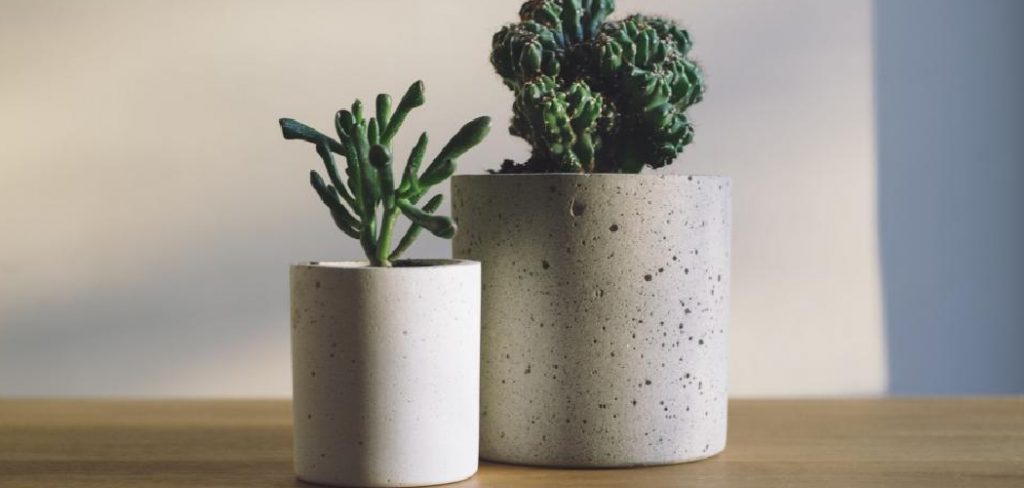
Proper care is essential to preserving their beauty while ensuring they remain durable for years to come. This article aims to provide a comprehensive, step-by-step guide on how to clean ceramic vase safely and effectively, using techniques tailored to various types of ceramic finishes. By following these methods, you can maintain the original luster and condition of your vases, whether they are everyday household items or valuable antiques. Consistent cleaning not only enhances their visual appeal but also helps protect their material integrity, allowing these stunning pieces to remain a focal point in your home.
Understanding Ceramic Vases and Their Materials
Ceramic vases come in various types, each defined by their texture, glaze, and overall composition. Porcelain is known for its smooth, glossy surface and fine, delicate quality, often appearing in translucent white. Earthenware, a more porous material, typically has a rustic and matte finish, making it suitable for a variety of decorative purposes.
Stoneware, on the other hand, is denser and more durable, with a semi-glossy finish that resists wear over time. These differences play a crucial role in determining the cleaning techniques required for each type.
Common Issues with Ceramic Vases
Over time, ceramic vases can accumulate dirt buildup, mineral deposits from water, and unsightly stains, especially if frequently used to hold flowers or other materials. Cracks and chips in the surface are also common, especially in older or thinner pieces, which can make cleaning more challenging. Identifying these issues early is essential to maintaining both the aesthetic and structural integrity of your vase.
Why Proper Cleaning Matters
Proper cleaning is essential to prevent damage to your vase’s delicate glazes and finishes. Using harsh chemicals or inappropriate techniques can strip glazes, highlight cracks, or dull the surface over time. Adopting tailored cleaning methods ensures that each vase retains its original beauty and remains a cherished part of your decor for years to come.
Gathering the Right Cleaning Supplies
When it comes to cleaning your vase, having the appropriate supplies on hand is crucial to ensure its preservation and aesthetic appeal. Using the right tools and cleaning agents will help protect its delicate surfaces and finishes.
Essential Cleaning Tools
To clean your vase effectively and gently, you will need soft cloths, sponges, soft-bristled brushes, and cotton swabs. These tools allow you to tackle both broad surfaces and intricate details without causing scratches or wear to the glaze or decoration.
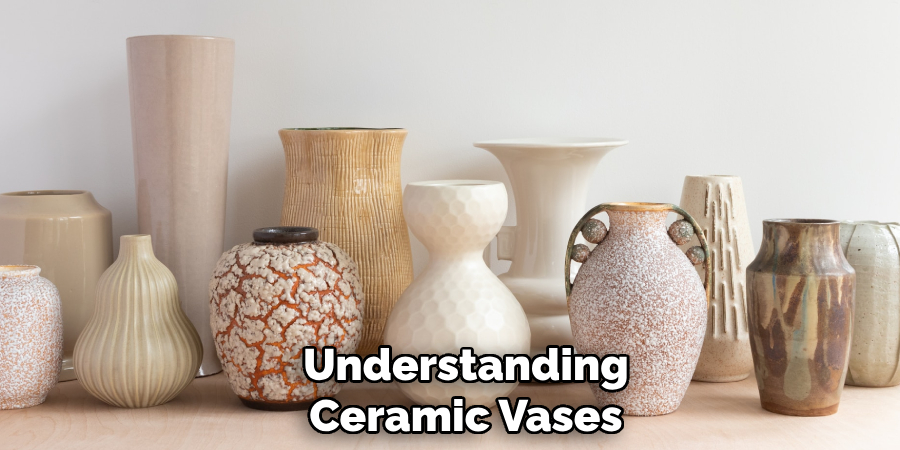
Cleaning Agents to Use and Avoid
Stick to mild and gentle cleaning solutions such as mild dish soap, white vinegar, and baking soda. These agents effectively remove dirt and stains without compromising the integrity of the glaze. Avoid using harsh chemicals, bleach, abrasive powders, or cleaners, as these can strip finishes or cause permanent damage to your vase.
Additional Supplies
Gloves can protect both your hands and the vase from accidental slipping. Keep microfiber towels for polishing and drying, as they are highly absorbent and safe for fragile surfaces. A drying rack is also useful to enable thorough air drying without risking water spots or handling damage. Having the right supplies ensures your cleaning process is both safe and effective.
Preparing the Vase for Cleaning
Emptying and Inspecting the Vase
Before beginning the cleaning process, carefully remove any flowers, plants, or decorative contents from the vase. Dispose of stagnant water and rinse out any remaining debris, taking care not to scratch the interior.
It is also essential to inspect the vase thoroughly for any cracks, chips, or weak areas, especially if the vase is antique or made from delicate materials like porcelain or glass. Identifying these issues early will help prevent further damage during cleaning.
Soaking the Vase
For vases with stubborn dirt, stains, or mineral deposits, soaking can be an effective first step. Fill the vase with warm water, adding a small amount of gentle dish soap or white vinegar, depending on the material and buildup.
Allow the vase to soak for 20 to 30 minutes, which helps loosen tough grime and mineral residue, making it easier to remove later. Ensure the water temperature is suitable based on the type of material, as extreme heat can damage fragile vases or certain finishes.
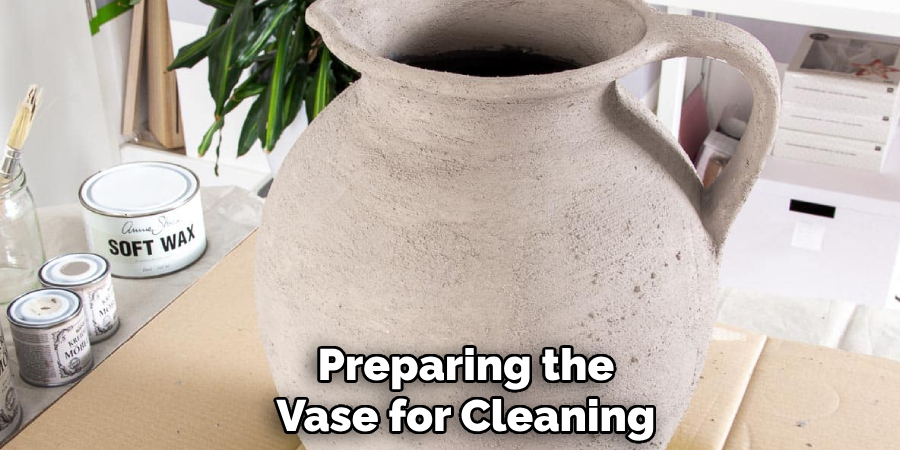
Precautions Before Cleaning
Antique, hand-painted, or intricately designed vases require special care during the preparation stage. Always handle these pieces with clean, dry hands or wear gloves to prevent oils or moisture from transferring onto the surface. Avoid placing such items in direct sunlight or near heat sources, as this could weaken their structure over time.
By taking these precautions, you minimize the risk of unnecessary damage and ensure your vase is ready for a safe and thorough cleaning process.
How to Clean Ceramic Vase: Step-by-Step Cleaning Process
General Cleaning Method
To begin cleaning your vase, use a mild soap and warm water mixture. Dip a soft cloth or sponge into the soapy water and gently clean both the inside and outside surfaces of the vase. Avoid using abrasive materials, as they can scratch or damage the finish. For smooth, delicate surfaces, wipe in gentle circular motions to lift dirt and grime effectively.
Removing Stubborn Stains
For tough stains or mineral deposits, a baking soda paste or white vinegar can work wonders. To create a baking soda paste, mix baking soda with a small amount of water until it has a thick, spreadable consistency. Apply the paste directly to the stained areas and allow it to sit for 10-15 minutes before wiping clean with a damp cloth.
Alternatively, pour a small amount of white vinegar into the vase and swirl it around, letting it sit on the affected areas. When scrubbing stains, always use soft tools such as a sponge or cloth to avoid damaging the vase’s surface.
Cleaning Hard-to-Reach Areas
Some vases, particularly those with narrow necks or intricate designs, may require extra attention. To clean these hard-to-reach areas, use tools like soft brushes, cotton swabs, or bottle brushes that can maneuver into tight spaces. Be thorough but gentle, ensuring you don’t apply excessive force that could weaken or break the vase.
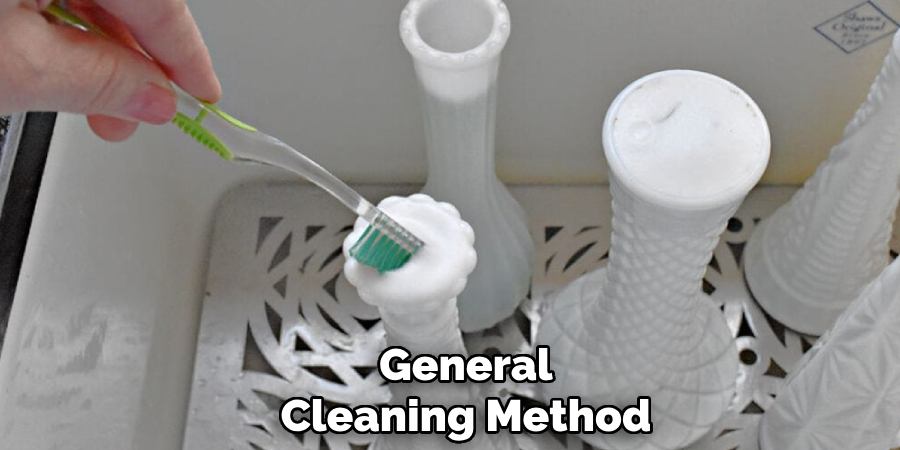
Rinsing and Drying
Once the vase is cleaned, thoroughly rinse it using warm, clean water to remove all traces of soap or cleaning agents. Any residue left behind can cause streaks or dullness. After rinsing, dry the vase immediately with a clean, soft cloth to prevent water spots or streaks from forming. For vases with intricate details, ensure that all crevices are thoroughly dried to prevent moisture retention.
Special Techniques for Antique or Delicate Ceramic Vases
Handling Fragile Glazes
Antique or delicate ceramic vases often feature fragile or intricate glazes that require extra care during cleaning. Avoid soaking these vases, as prolonged exposure to water can weaken delicate finishes or cause cracks. Instead, use a damp, soft microfiber cloth to remove dust and dirt gently.
If cleaning agents are necessary, ensure they are mild, pH-neutral solutions specifically designed for ceramics. Harsh chemicals can strip the glaze or cause discoloration, so always test on an inconspicuous area first.
Consulting Professional Restorers
For particularly valuable or irreplaceable ceramic pieces, it is wise to consult professional restorers rather than attempting advanced cleaning on your own. These experts utilize specialized tools and techniques to handle fragile antiques, ensuring preservation without risking damage.
Situations such as repairing cracks, removing stubborn stains, or revitalizing faded glazes are best left to professionals who can maintain the vase’s authenticity and value. Additionally, they can provide tailored advice on long-term care for your vase.
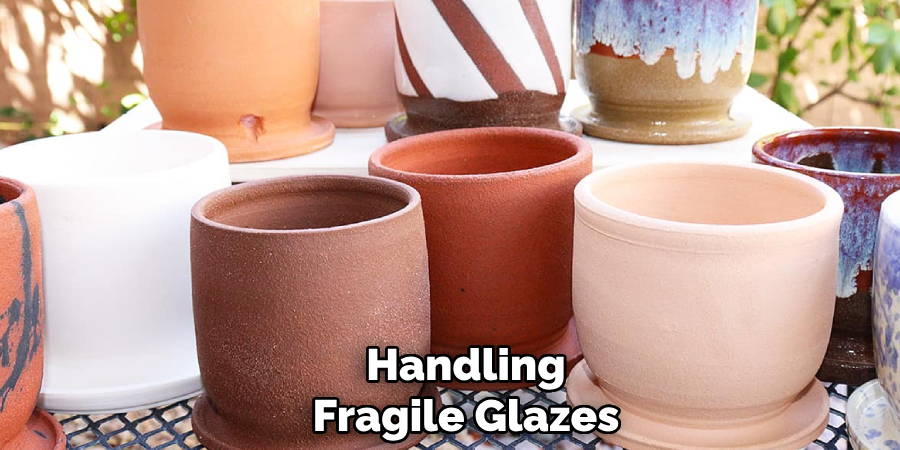
Preserving the Vase’s Finish
To preserve the vase’s finish and ensure its longevity, consider using specialized cleaning products labeled safe for antique ceramics. Avoid abrasive materials or scrubbing actions, as these can scratch or dull the surface. Regular dusting with a soft brush and storing the vase in a stable, dry environment away from direct sunlight can further maintain its beauty for years to come.
Maintaining Ceramic Vases Between Cleanings
Regular Dusting and Wiping
To keep your ceramic vases looking their best, regular dusting is essential. Using a soft microfiber cloth can gently remove dust and prevent buildup without risking scratches or damage to the surface. Avoid using any harsh chemicals during routine upkeep, as they may harm the vase’s finish.
Avoiding Exposure to Harsh Conditions
Ceramic vases are sensitive to extreme environmental conditions. It’s essential to keep them out of direct sunlight, as this can cause fading or discoloration over time. Similarly, avoid exposing them to extreme temperatures or high humidity levels, as these conditions can weaken the material and cause it to crack.
Storage Tips
Proper storage is key to maintaining the integrity of your ceramic vases. Store them in a stable location where they are unlikely to topple or sustain accidental chips. Using cushioned or padded surfaces can add an extra layer of protection, especially for antique or delicate pieces.

Common Mistakes to Avoid When Cleaning Ceramic Vases
Using Abrasive Materials
One of the most common mistakes is using abrasive materials like steel wool, rough brushes, or harsh chemicals. These can scratch the surface or strip decorative finishes, making the vases lose their visual appeal. Always opt for soft sponges or cloths paired with mild cleaning solutions to preserve their delicate surfaces.
Soaking Too Long
While it may seem harmless, soaking ceramic vases for extended periods can lead to water damage, especially in porous ceramics or pieces with delicate finishes. Prolonged exposure to water can seep into the material, weakening its structure over time. It’s best to use a quick rinse or gently wipe the vase to avoid unnecessary wear.
Ignoring Cracks and Chips
Cracks and chips may seem minor, but they can expand and worsen with improper cleaning practices. Applying pressure or allowing water to infiltrate such areas can lead to further damage. It’s crucial to handle damaged vases with extra care and seek professional repairs if needed.
Conclusion
Knowing how to clean ceramic vase items properly is essential to preserving their beauty and longevity. Gentle and thorough cleaning methods prevent unnecessary damage, ensuring your vases remain in excellent condition over time. Regular maintenance not only enhances their appearance but also helps safeguard their structure.
When handling antique or delicate pieces, extra care is necessary to prevent chips, cracks, or weakening of the material. Always use soft tools and avoid harsh chemicals to protect their value. With careful handling and consistent upkeep, your ceramic vases will remain timeless decorative treasures for years to come.
Specialization:
- Master of wheel-throwing, hand-building, and advanced glazing techniques
- Focus on creating both functional pottery and decorative art pieces
Recognition:
- Celebrated by collectors and art enthusiasts for creating one-of-a-kind pieces that blend artistry with functionality
- Participates in local and national exhibitions, earning accolades for his innovative designs and craftsmanship
Passion:
- Deeply committed to exploring and pushing the boundaries of ceramic artistry
- Continuously experiments with new materials, firing techniques, and artistic concepts to evolve his craft
Personal Philosophy:
- Believes in the transformative power of art, aiming to evoke emotions and connections through his ceramic creations
- Advocates for sustainability in ceramics, using eco-friendly materials and practices whenever possible


